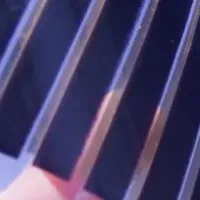
Huawei Unveils Top 10 Trends Shaping FusionSolar 2025 And Beyond
Huawei's Vision for FusionSolar 2025
On January 7, 2025, Huawei Digital Power unveiled a pivotal report detailing the top ten trends set to redefine the landscape of photovoltaic (PV) and energy storage industries in the upcoming years. Under the theme "Integrated Innovation for an Intelligent Future," the company emphasizes the transition of PV towards becoming the primary energy source in light of favorable renewable energy policies projected for 2024 and beyond.
1. PV as Primary Energy Source
A comprehensive range of activities from scientific research to product testing has culminated in solidifying the role of renewable energy generators, particularly solar power, as the primary source of energy. This shift is crucial in supporting the new energy systems emerging globally.
2. Networking Across All Scenarios
The development of ubiquitous energy storage systems and networking will fortify the long-term stability of emerging energy systems. By playing a crucial role as a supporting energy source, energy storage systems (ESS) are vital for electricity generation, transmission, and distribution, ensuring reliable operation over extended periods.
3. Safety from Battery Cells to Grids
The integrity of energy storage systems is non-negotiable for sustainability. It requires an extensive protection framework that extends from battery cells right through to the electrical grids, ensuring incidents such as fires or explosions are effectively prevented. Moreover, automatic isolation and rectification of grid disruptions must be integrated to sustain reliability throughout the ESS lifecycle.
4. Automated Lifecycle Management
Renewable plants are set to undergo full autonomy in their operational management, optimizing efficiency and performance as they age.
5. Enhanced Frequency and Energy Density
The introduction of third-generation semiconductor and digital technologies will significantly improve the power density of electronic converters, enhancing the quality and efficiency of PV and ESS systems.
6. High Voltage and Reliability
Implementing high voltage applications is anticipated to lower the Levelized Cost of Energy (LCOE) of PV and ESS systems, while designs focusing on high reliability will enhance system uptime and security.
7. 100% Renewable Microgrids
Economically viable and stable renewable microgrids will emerge in power-scarce regions, underscoring broader transitions towards renewable energy.
8. Synergy Among PV, ESS, and Chargers
Power distribution networks will gain much-needed flexibility, facilitating the adoption of clean energy across various sectors.
9. Community Energy Sharing
Transitioning from individual consumption to community-based energy usage will optimize the distribution and coordination of renewable energy among households.
10. Flexible Adaptation to Diverse Business Models
Integrated platforms will evolve to support varied business models, amplifying the benefits derived from solar technologies.
Conclusion
These trends exemplify how technological innovations in renewable energy are accelerating the pathway towards making photovoltaics the primary energy source. Huawei FusionSolar is dedicated to collaborating with global customers and partners to foster advancements in the PV and energy storage industries, ultimately paving the way for a greener, more sustainable future for households and businesses alike.

Topics Energy)










【About Using Articles】
You can freely use the title and article content by linking to the page where the article is posted.
※ Images cannot be used.
【About Links】
Links are free to use.